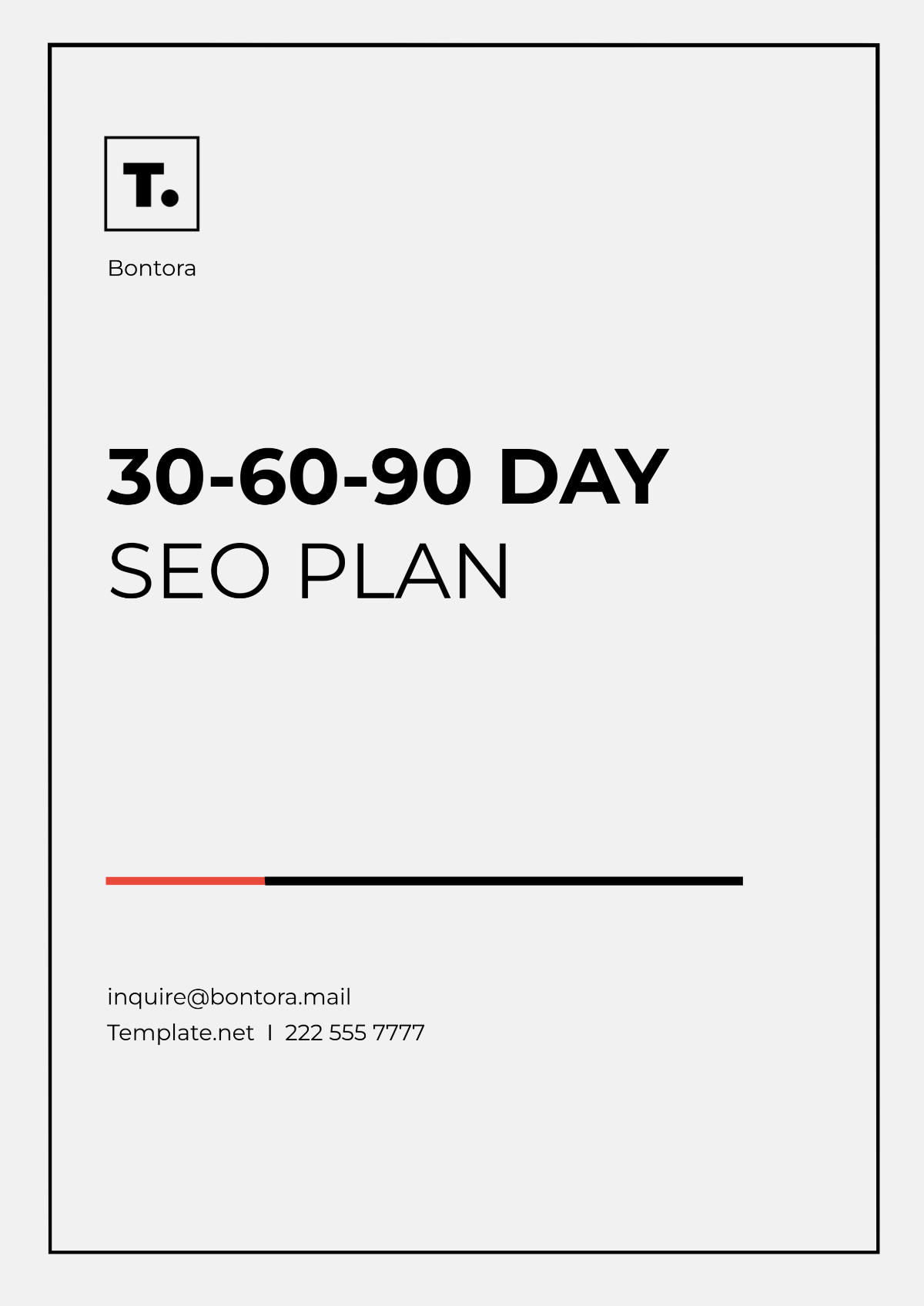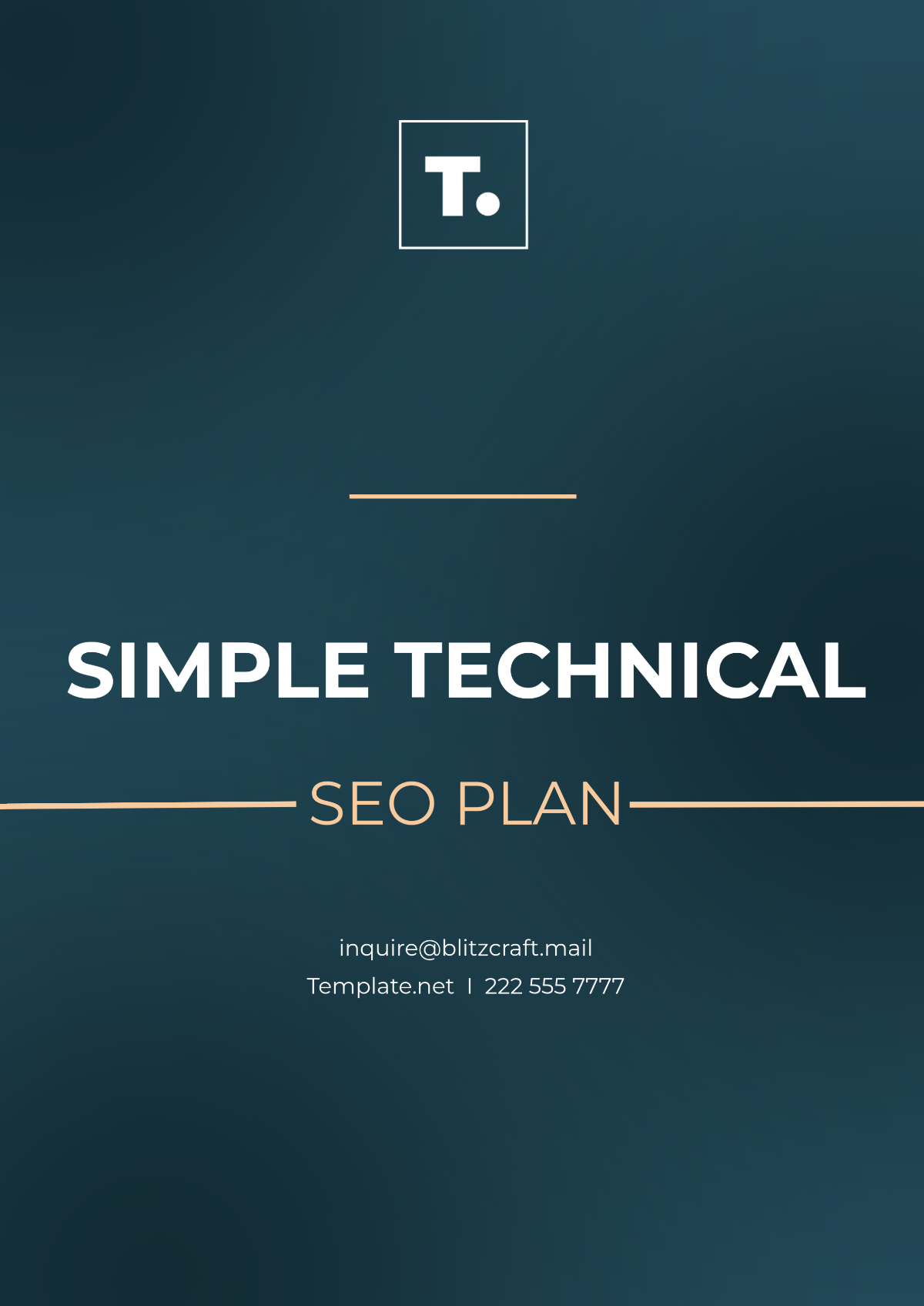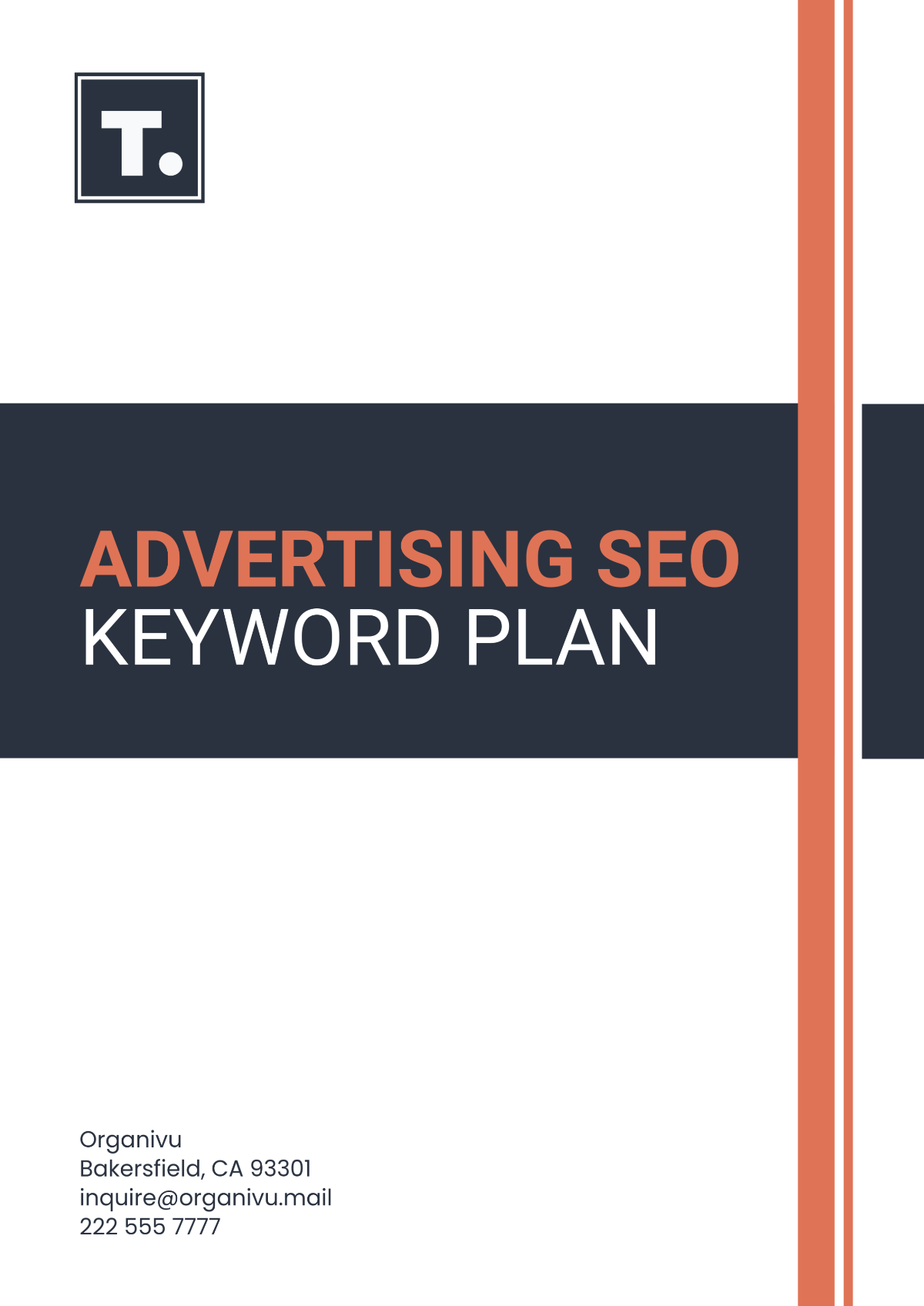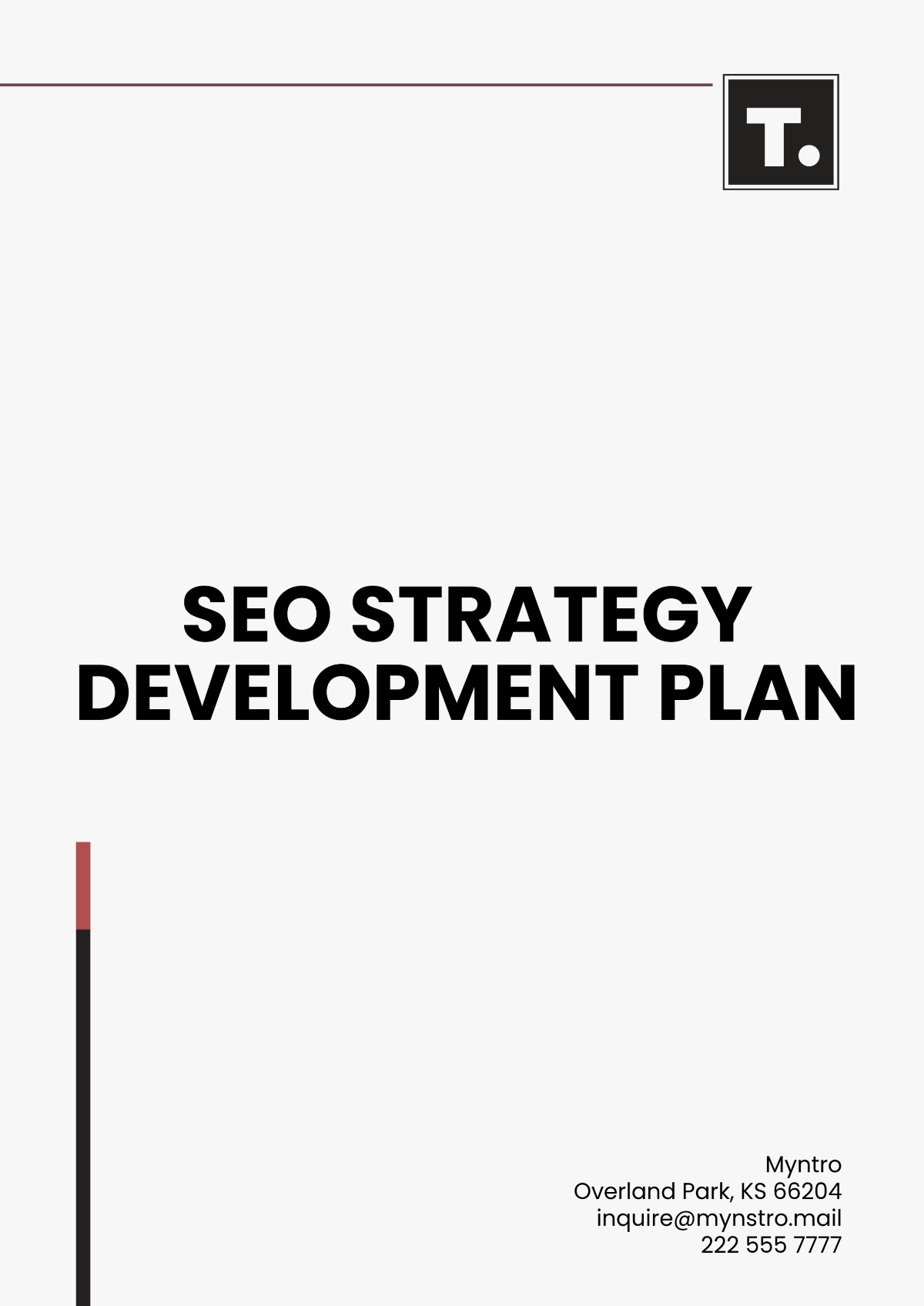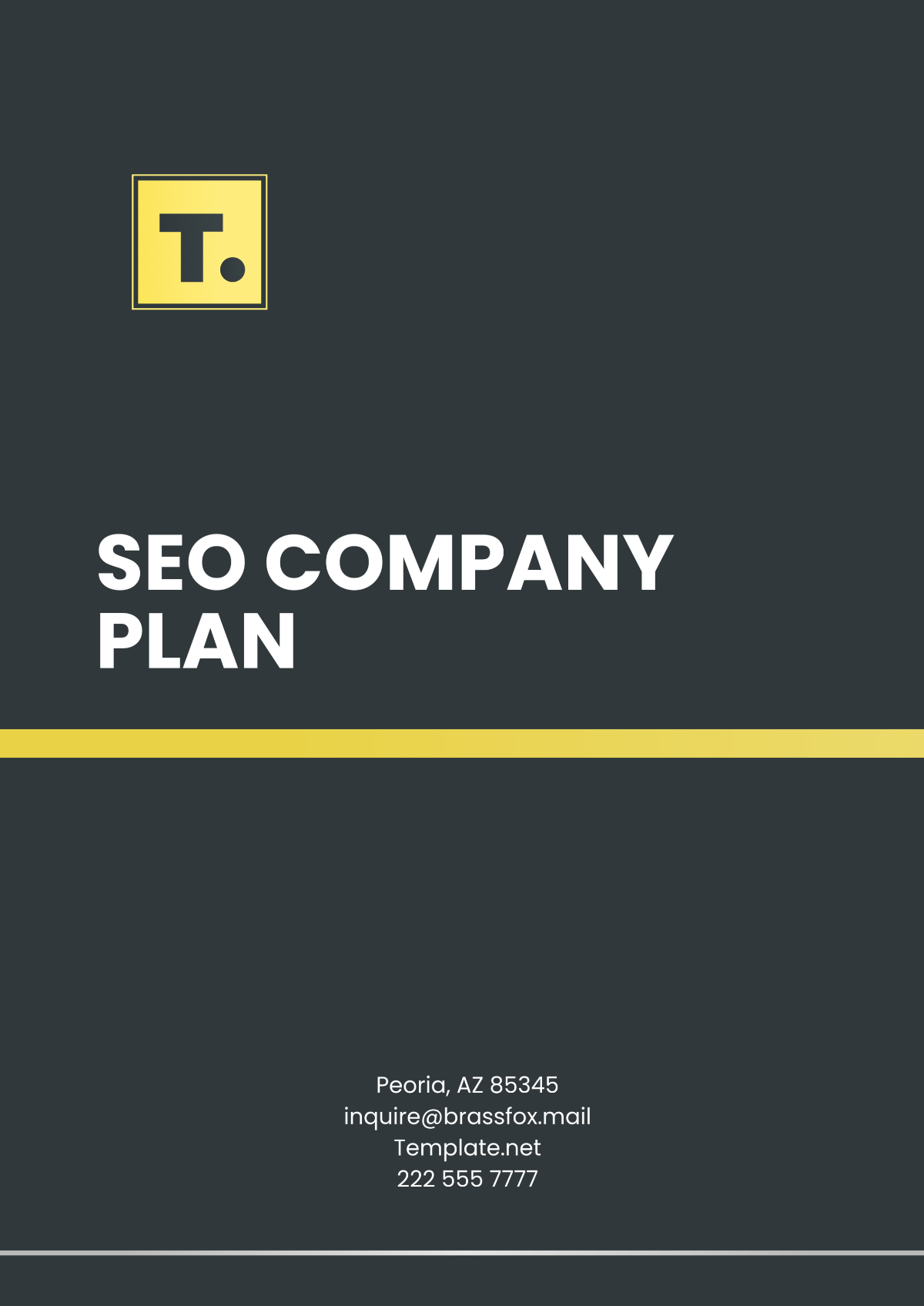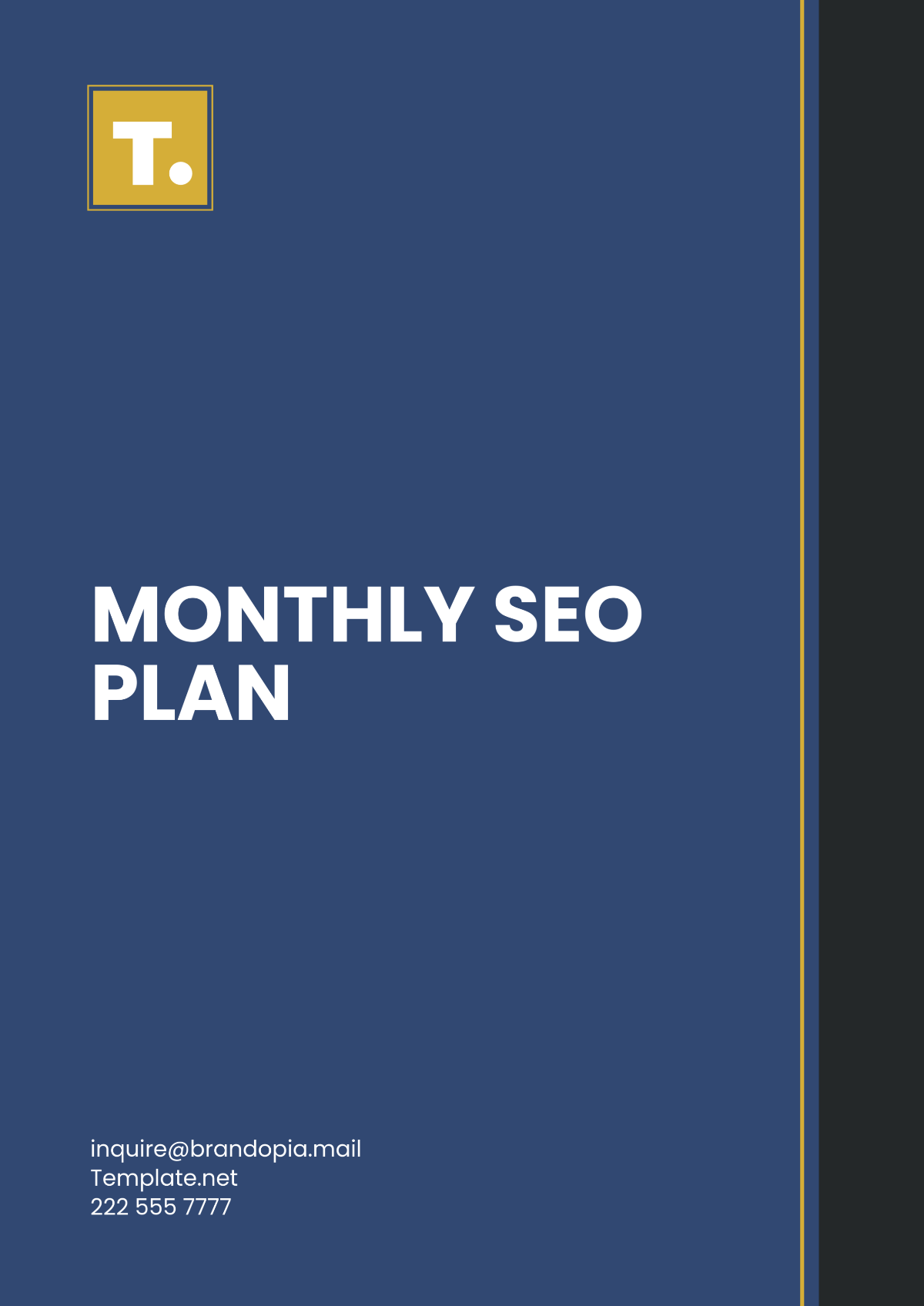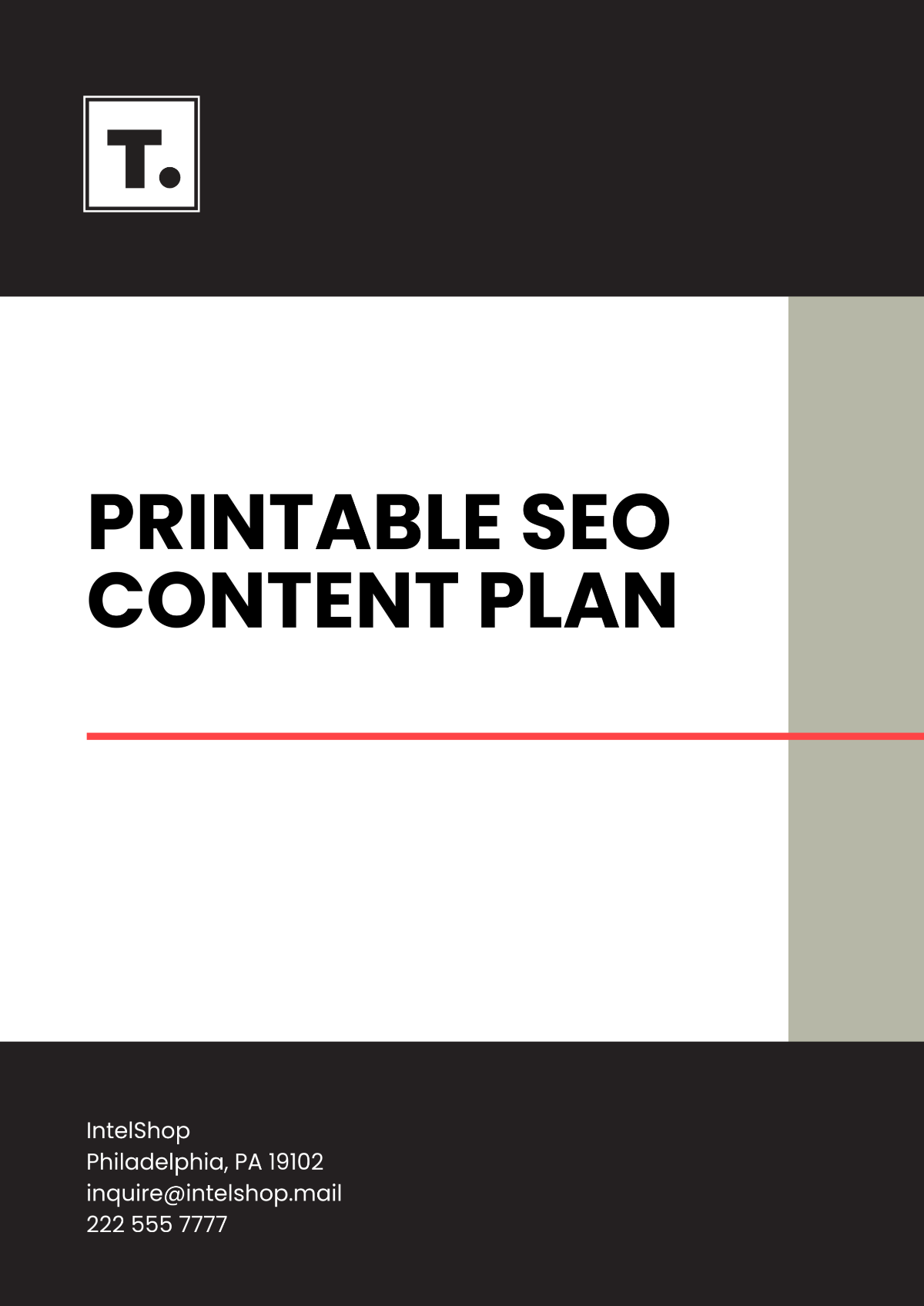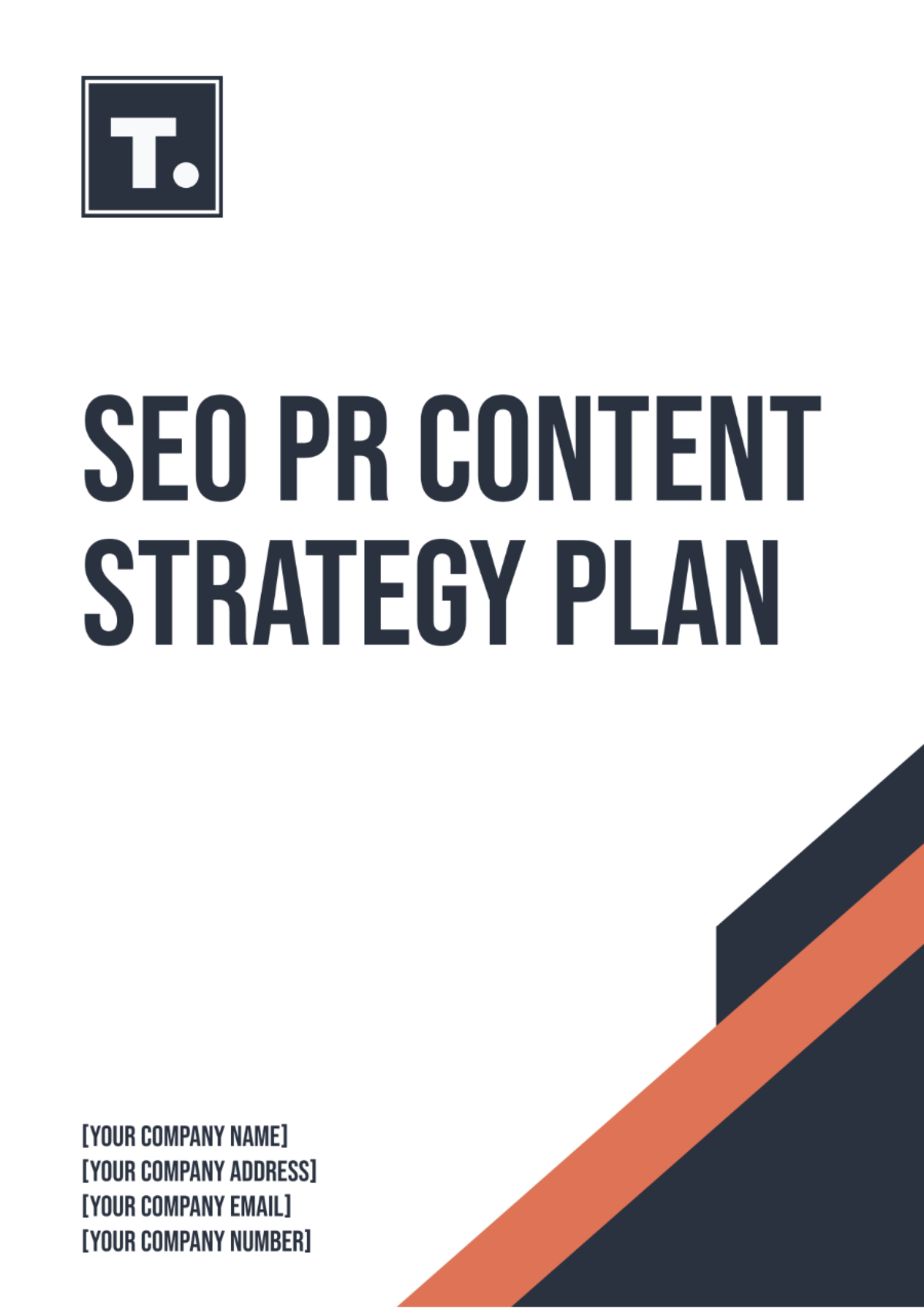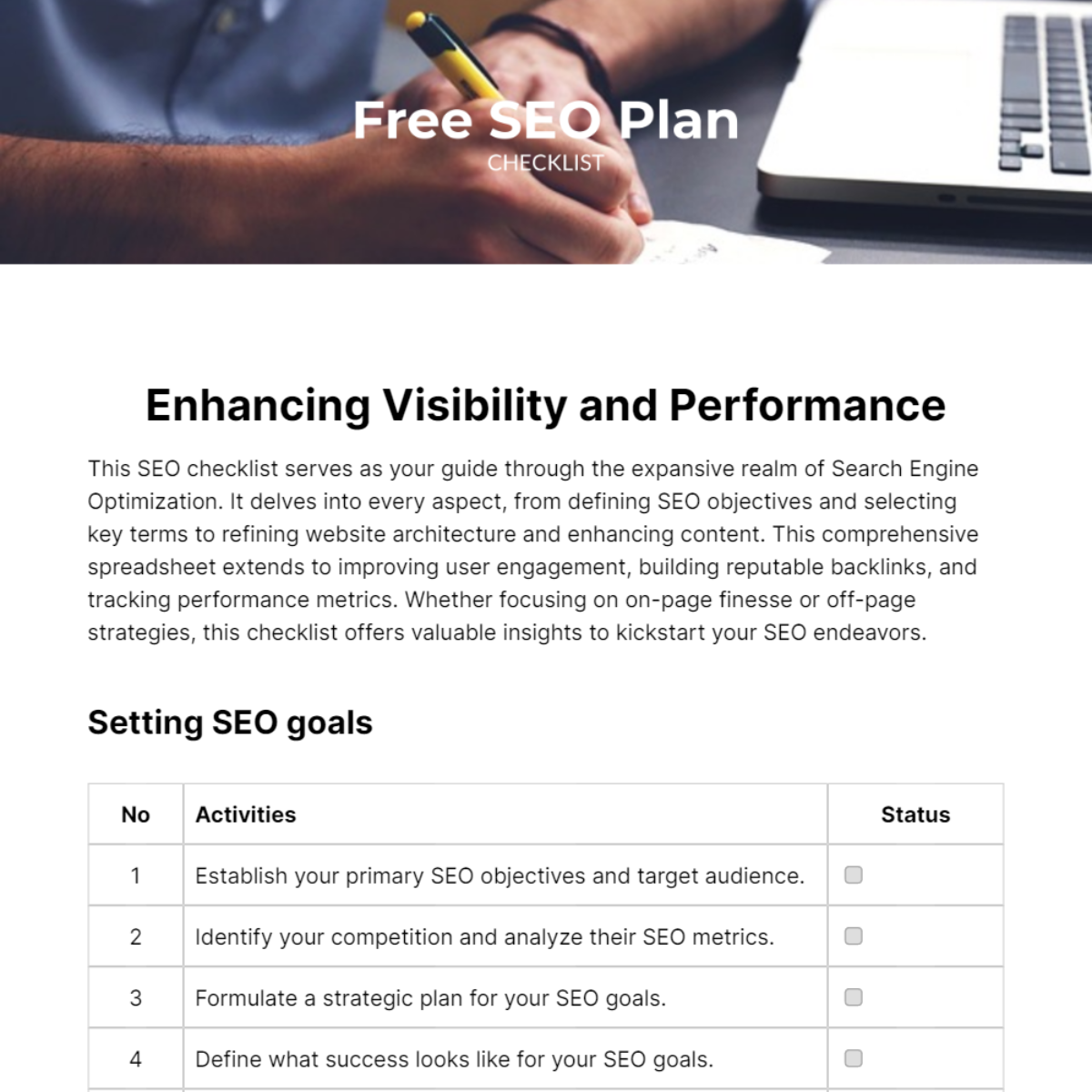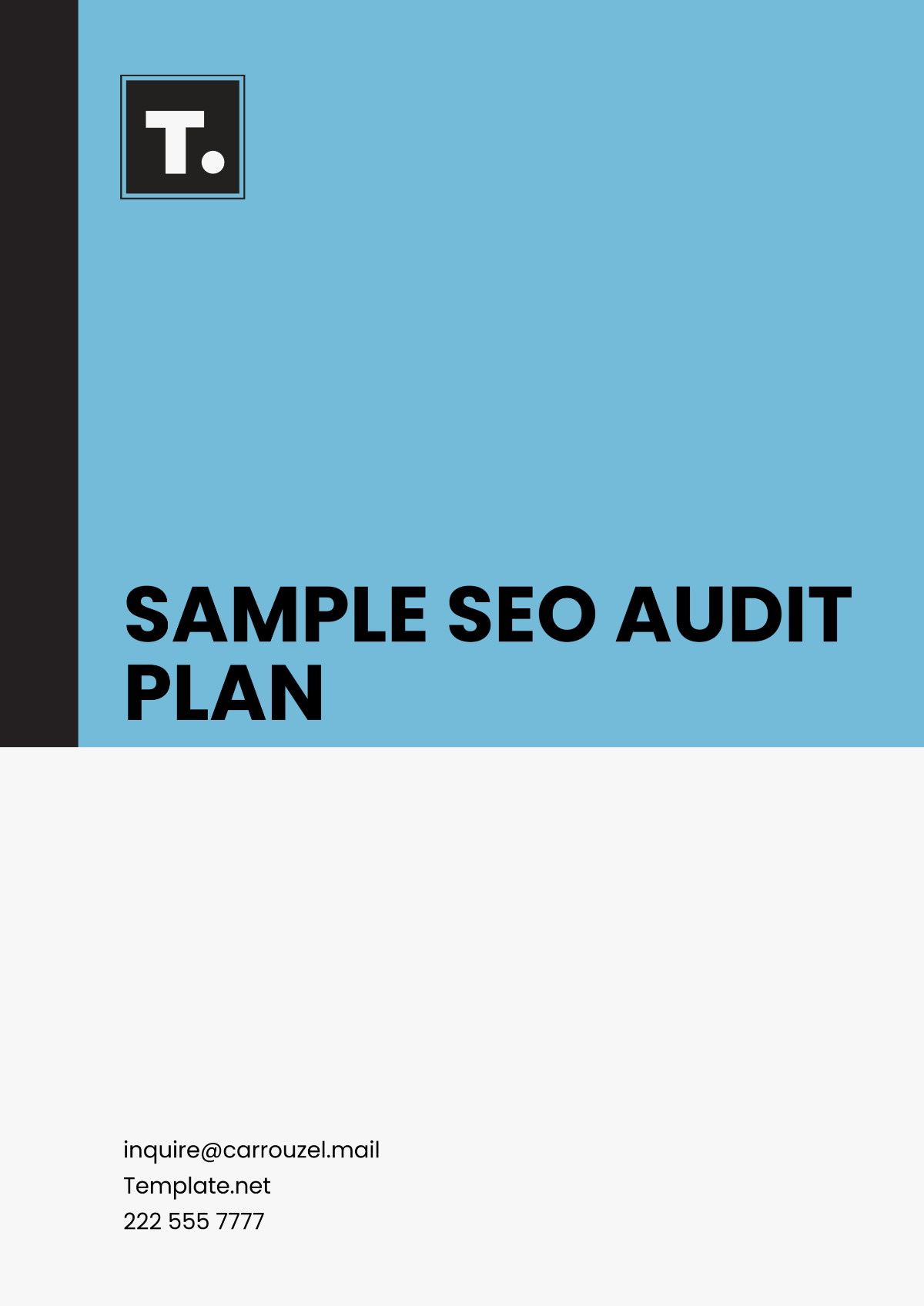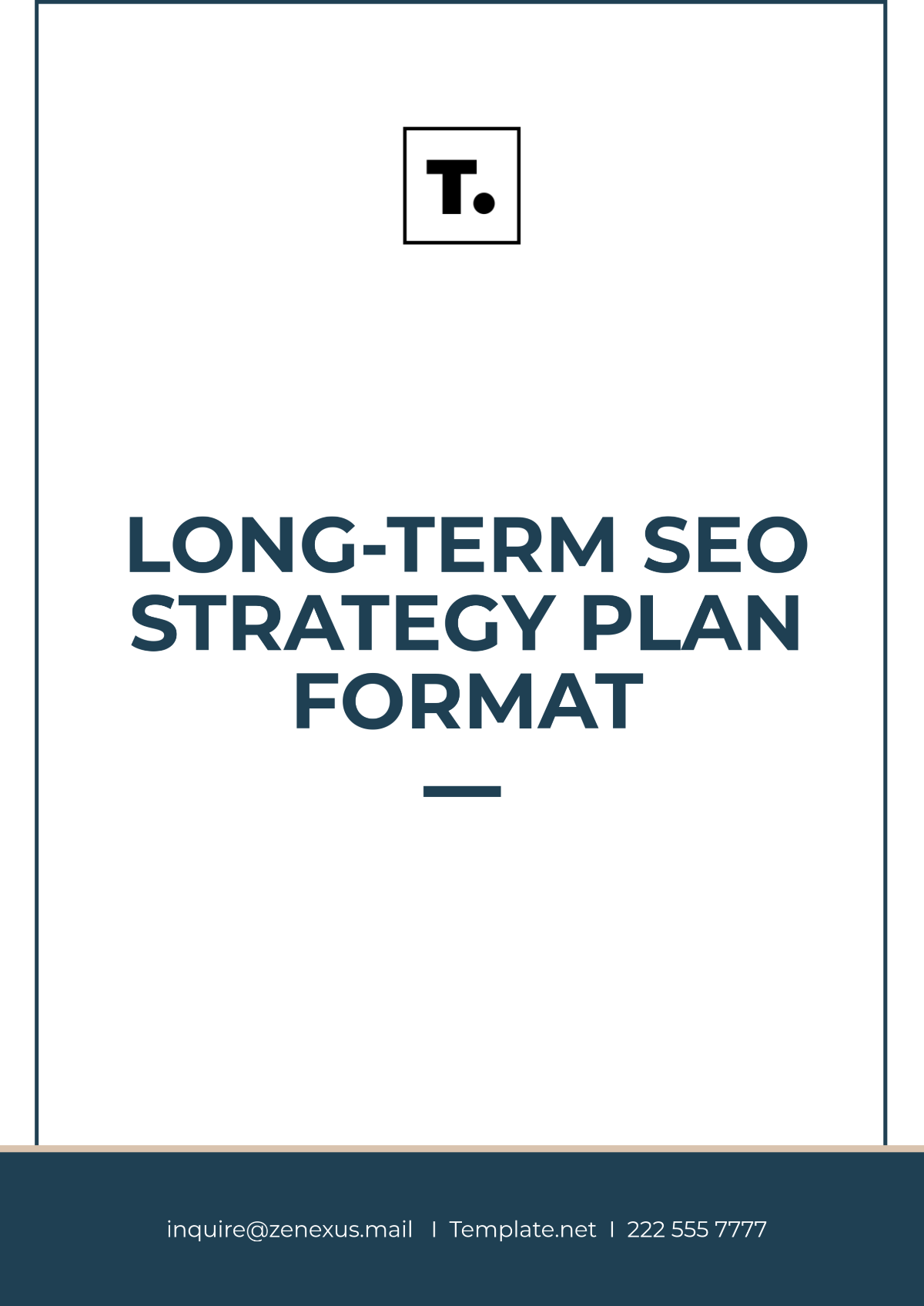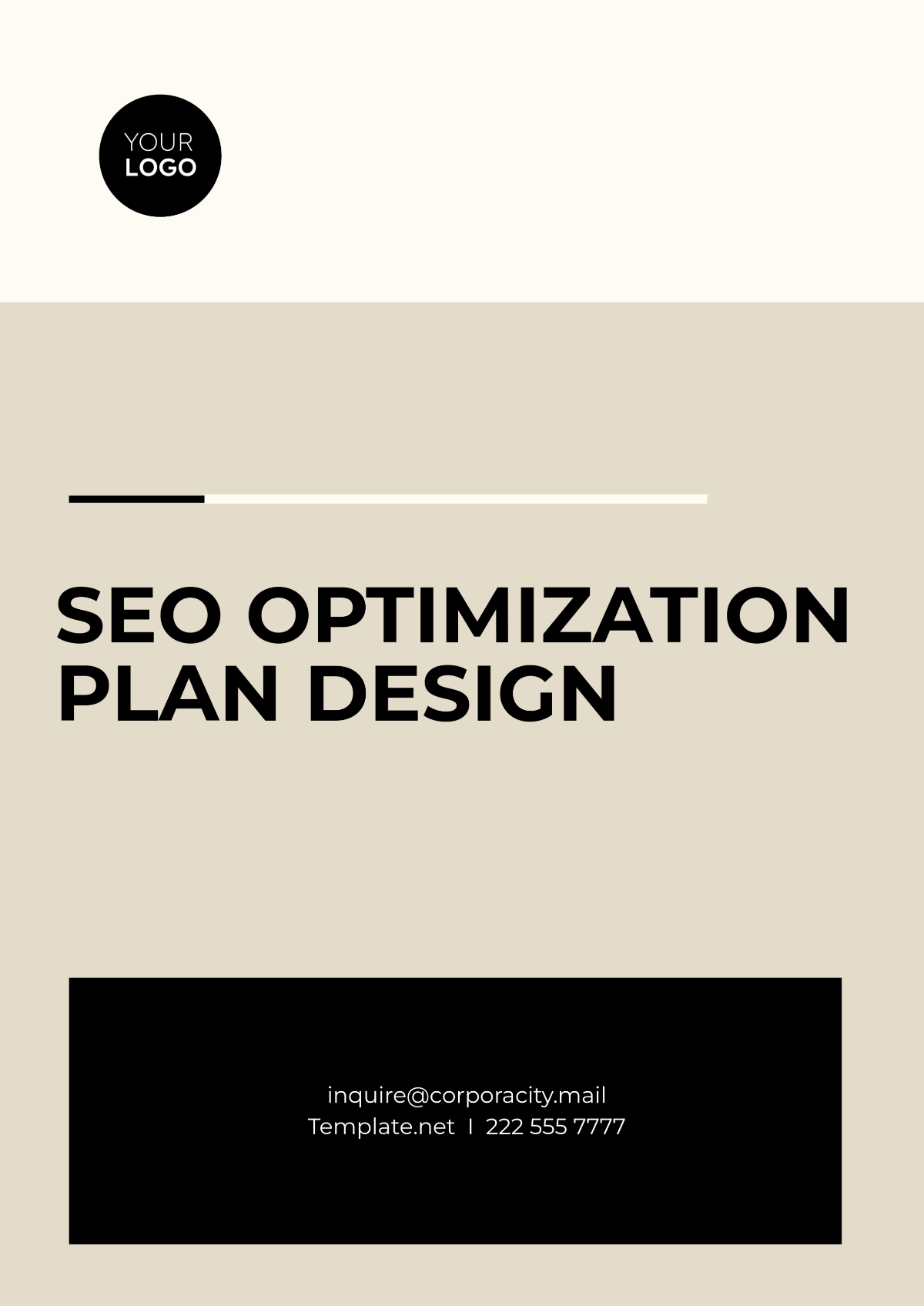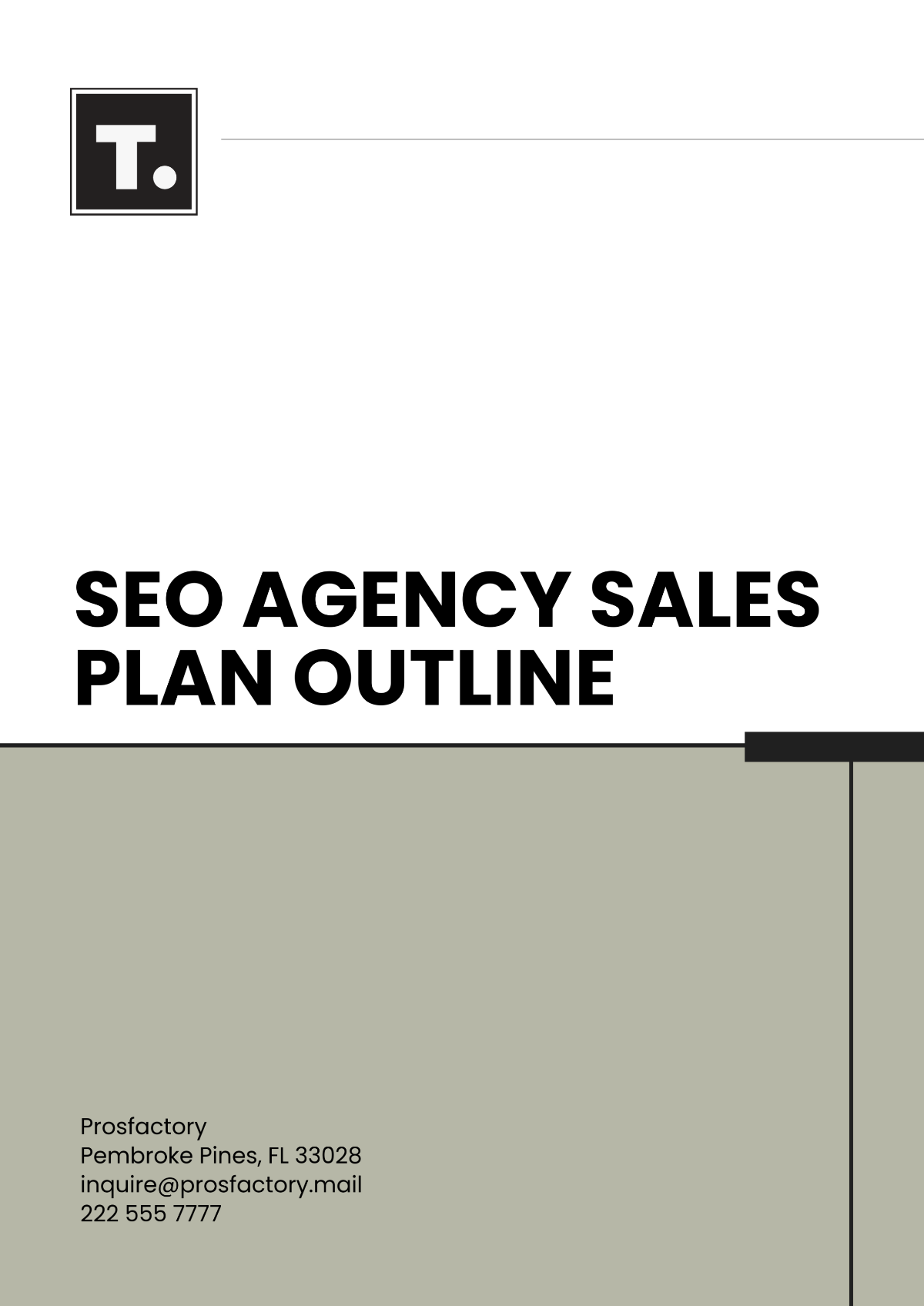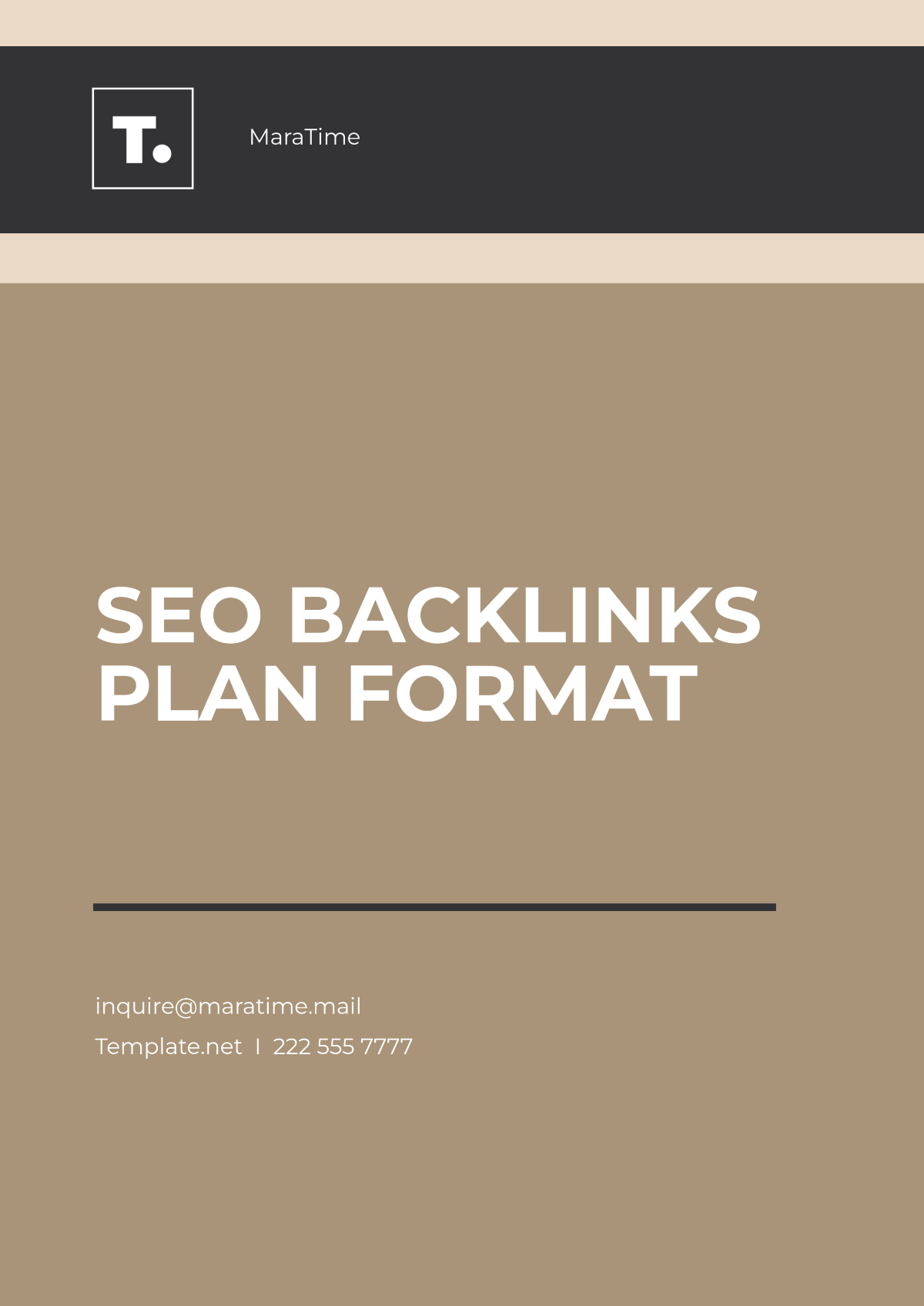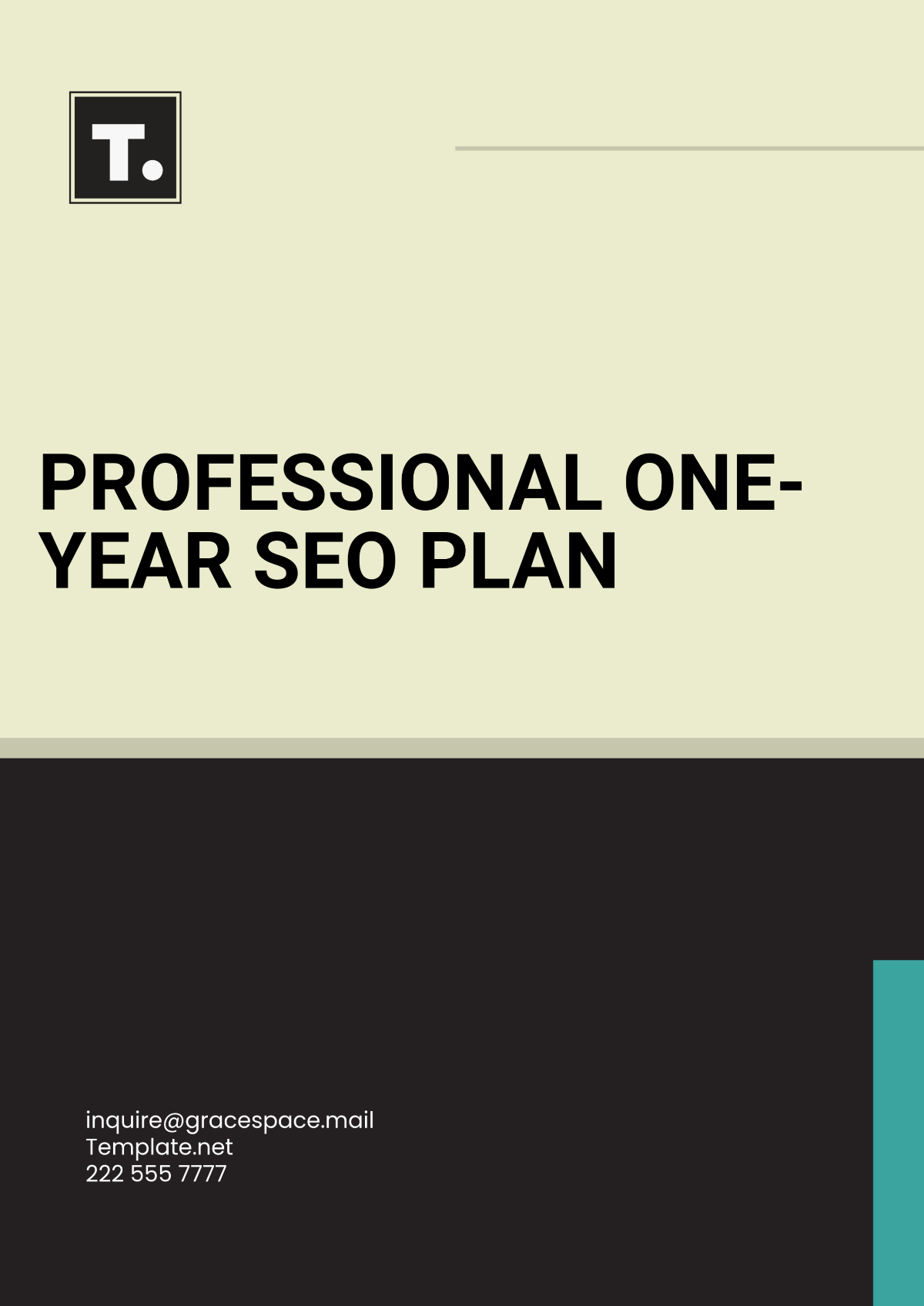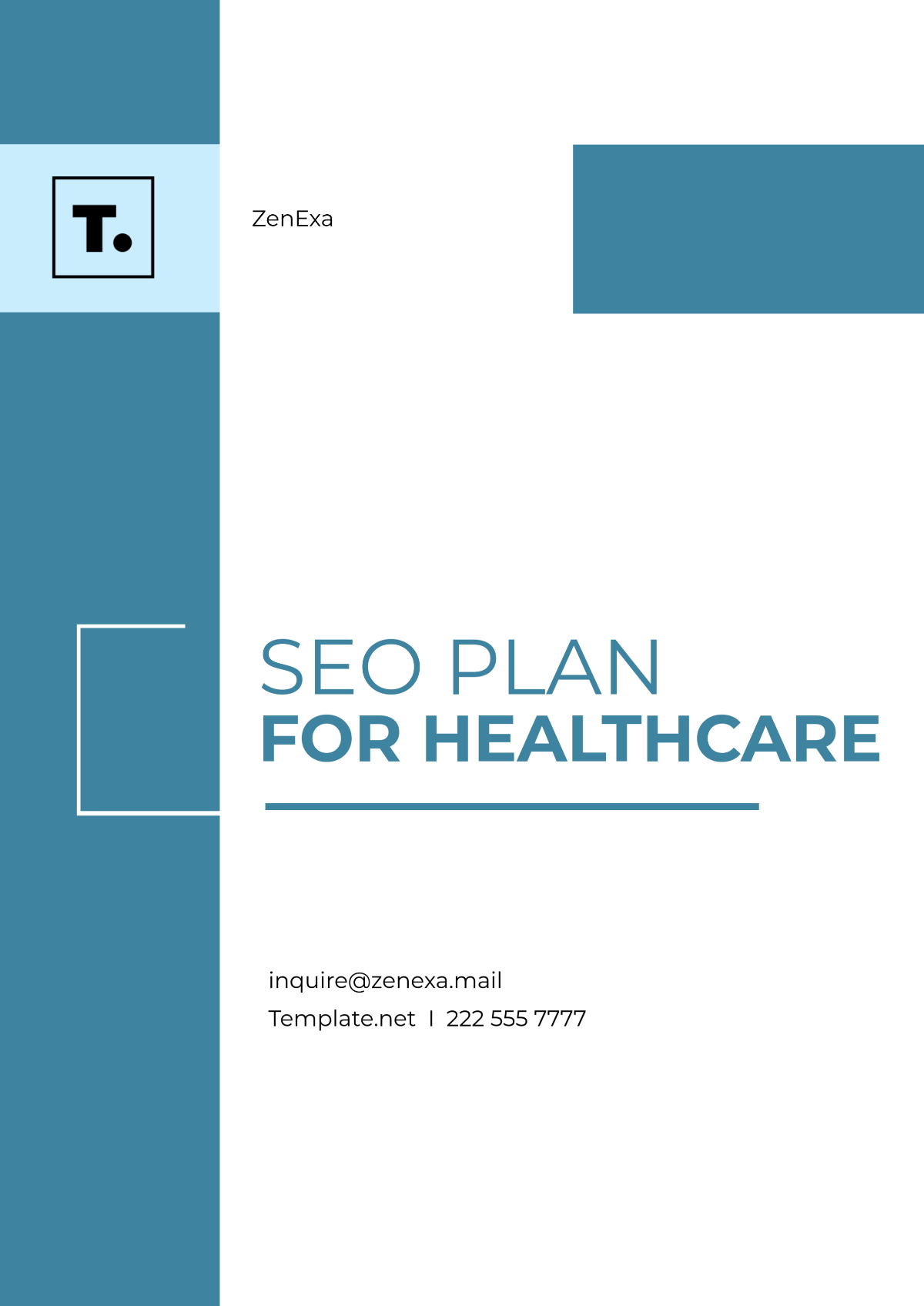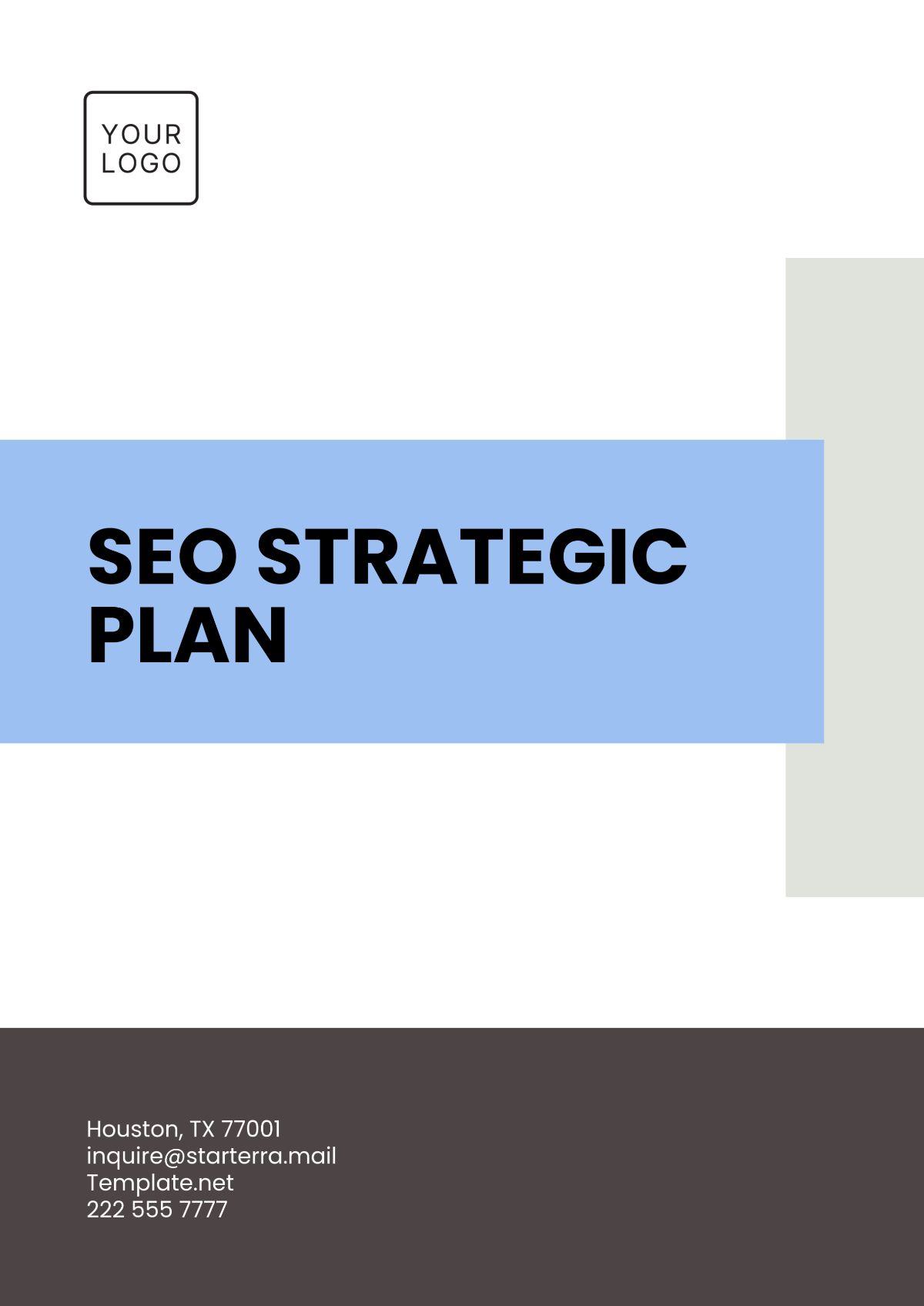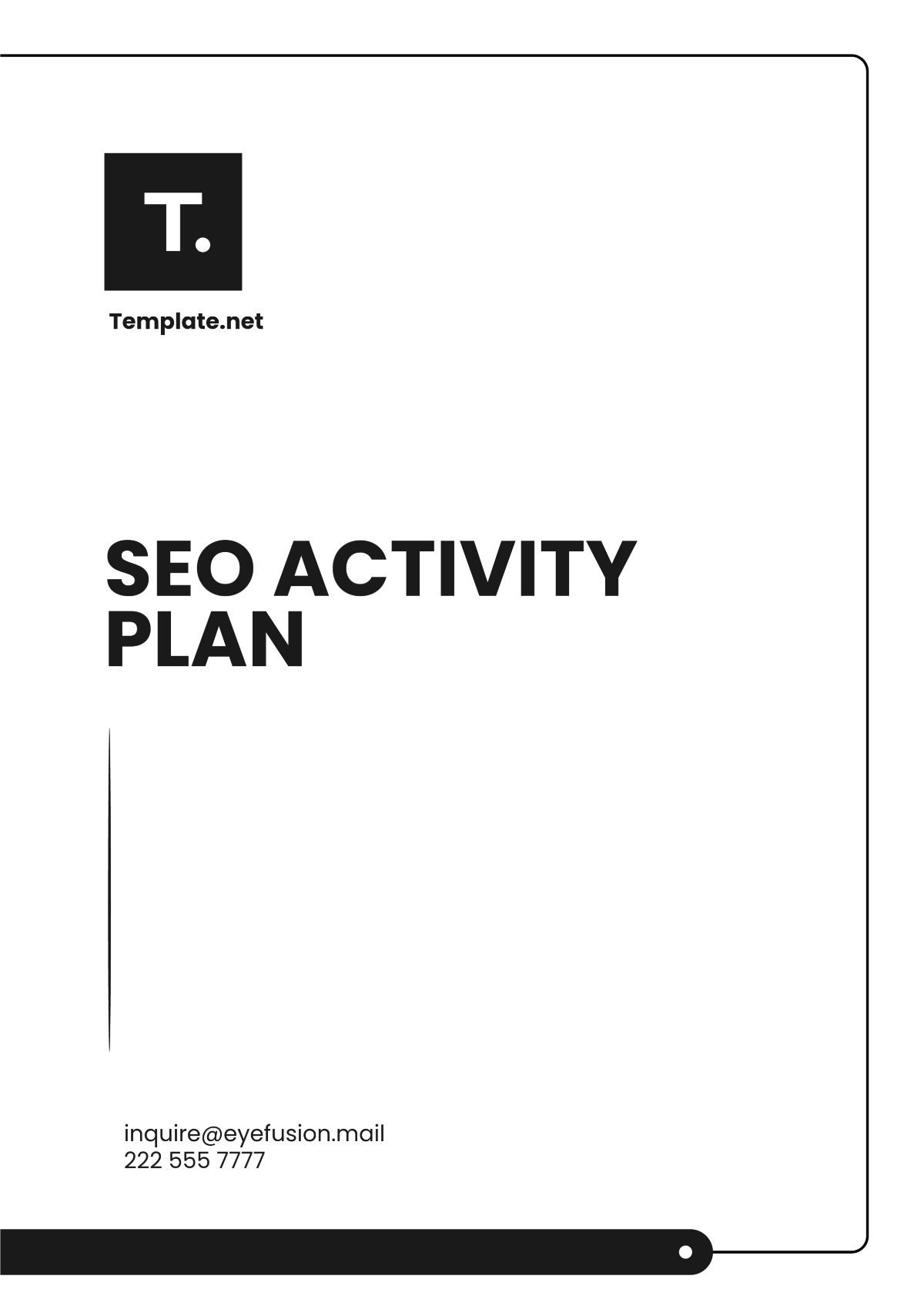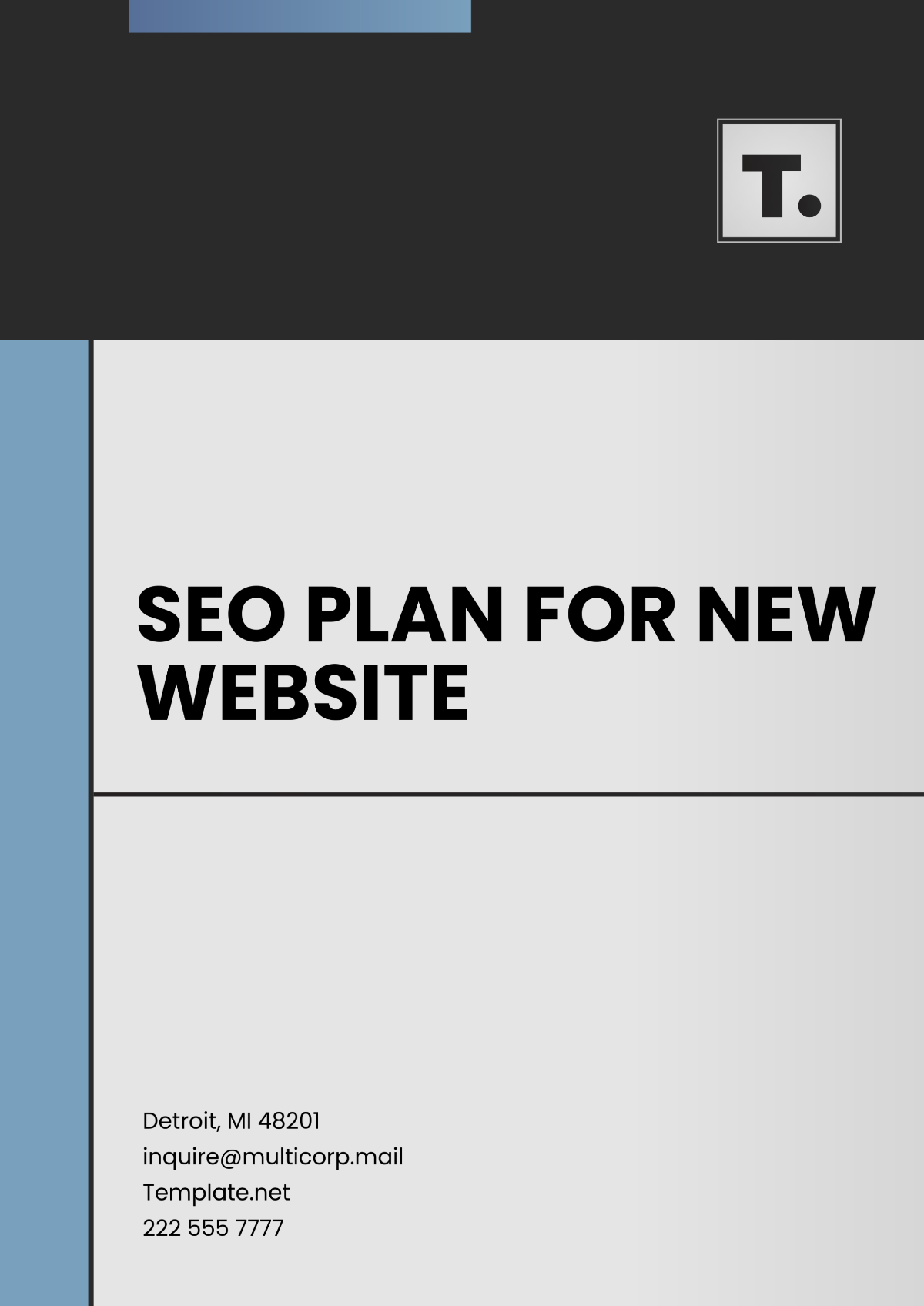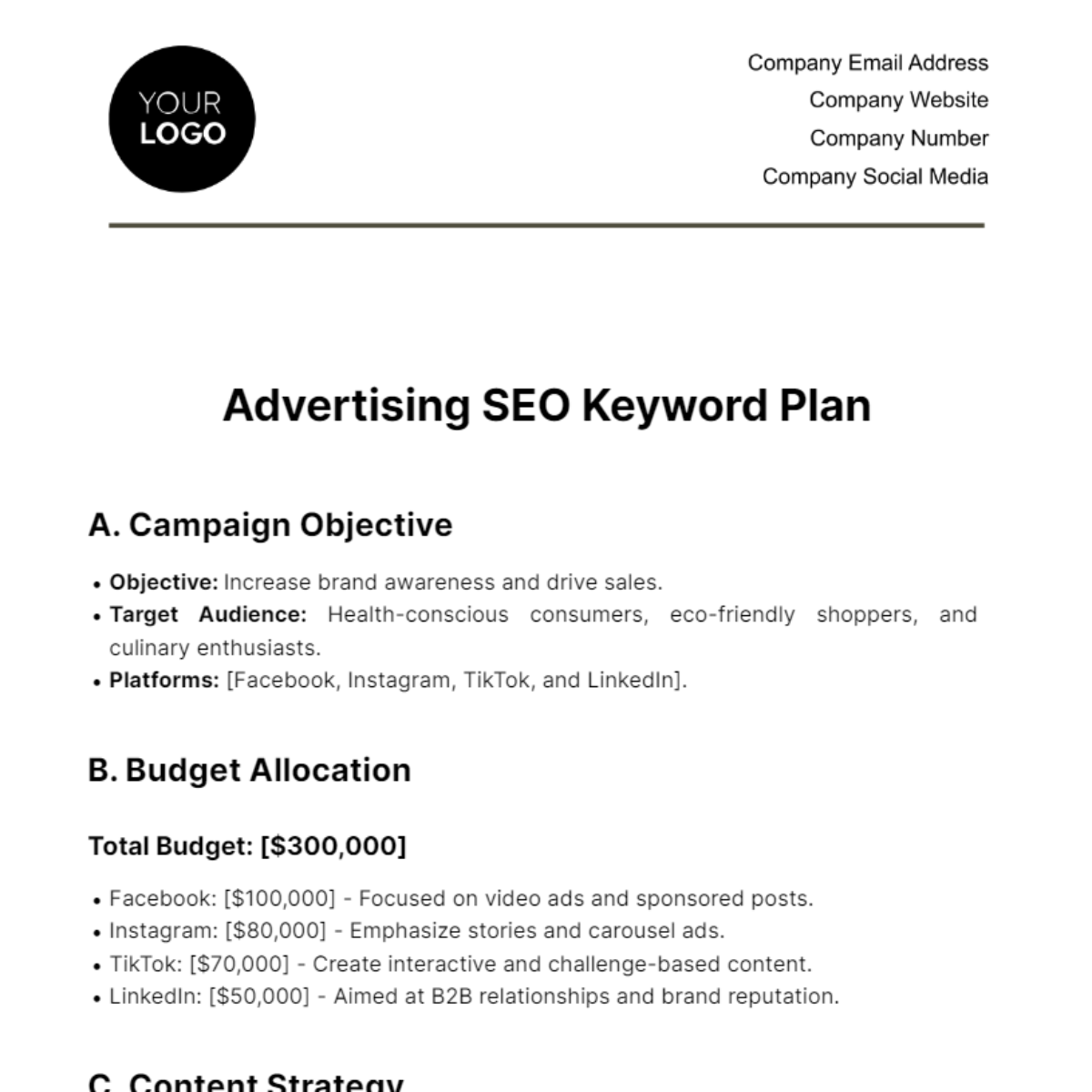SEO Plan for E-commerce Website
Prepared by: [YOUR NAME]
Company: [YOUR COMPANY NAME]
I. Introduction
The e-commerce industry is highly competitive, with businesses constantly vying for visibility and market share. [YOUR COMPANY NAME], an established player in this sector, recognizes the importance of a robust SEO strategy to maintain and improve its online presence. Despite having a strong product offering and customer base, there's a need to enhance visibility in search engine results pages (SERPs) to reach new audiences and increase revenue.
II. Objectives
Our objectives are focused on driving measurable growth and enhancing brand visibility:
Increase organic traffic by at least 30% within the next 12 months.
Improve keyword rankings for top products by an average of 10 positions.
Achieve a 20% increase in conversion rate from organic traffic through targeted optimization efforts.
III. Keyword Research
A. Target Keywords
Keyword Category | Target Keywords | Average Monthly Searches | Keyword Difficulty | Priority |
|---|---|---|---|---|
Short-Tail Keywords | "electronics," "gadgets," "smartphones" | 500,000 | High | High |
Long-Tail Keywords | "best budget smartphones 2050," "top 10 gaming laptops" | 10,000 | Medium | High |
FAQ Keywords | "how to choose the right laptop," "Tips for smartphone photography" | 5,000 | Low | Medium |
B. Competitor Analysis
Competitor | Top Keywords | Backlink Profile (Domains) | Content Strategy | Gap Analysis |
|---|---|---|---|---|
Amazon | "cheap electronics," "best gadgets" | 500 | Product reviews, comparisons | Opportunities in long-tail keywords |
Samsung | "latest smartphones," "tech news" | 1,000 | News articles, tech guides | Focus on specific product categories |
Razer | "gaming laptops under $1000," "top 10 smartphones" | 800 | Listicles, product roundups | Lack of in-depth buying guides |
IV. On-Page SEO
A. Content Optimization
Content optimization is a multifaceted process aimed at improving the relevance and quality of website content. It involves:
Conducting keyword research to identify high-impact keywords for each page.
Optimizing meta tags (title, description) to include target keywords and entice clicks.
Improving content structure with headings (H1, H2, H3) for better readability and SEO.
Ensuring content is unique, informative, and provides value to users.
Adding multimedia elements (images, videos) to enhance engagement.
Our team will regularly audit and update existing content to align with SEO best practices and user intent.
B. Technical SEO
Technical SEO focuses on optimizing the backend of a website for search engine crawlers. Key aspects include:
Improving site speed through caching, image optimization, and code minification.
Ensuring mobile responsiveness for a seamless user experience across devices.
Implementing structured data markup (such as Schema.org) to enhance rich snippets in search results.
Optimizing URL structures and internal linking to improve crawlability and indexing.
Regularly monitoring and fixing crawl errors using tools like Google Search Console.
V. Off-Page SEO
A. Backlink Strategy
Backlinks are crucial for off-page SEO, signaling to search engines the credibility and authority of a website. Our backlink strategy includes:
Identifying high-authority websites relevant to our industry for potential link-building opportunities.
Creating engaging, shareable content to attract natural backlinks.
Guest posting on reputable blogs and websites to earn backlinks.
Monitoring backlink profiles regularly and disavowing toxic links.
B. Social Media Engagement
Social media plays a significant role in off-page SEO, indirectly influencing website visibility and traffic. Our social media strategy involves:
Sharing blog posts, product updates, and promotions on social media platforms.
Engaging with followers through polls, Q&A sessions, and contests to increase brand visibility.
Collaborating with influencers and brand advocates to reach a wider audience.
Monitoring social media metrics (likes, shares, comments) to gauge engagement levels and adjust strategy accordingly.
VI. Local SEO
Claim and optimize Google My Business listing.
Use local keywords in content and meta tags.
Encourage local reviews and testimonials.
VII. Performance Tracking
A. Key Metrics
Tracking key metrics is essential to measure the effectiveness of our SEO efforts. We will focus on the following metrics:
Organic Traffic Growth: Monitor the increase in organic traffic to measure the success of our keyword and content optimization strategies.
Keyword Rankings: Track the movement of our target keywords in SERPs to gauge the effectiveness of our optimization efforts.
Conversion Rate from Organic Traffic: Measure the percentage of organic visitors who complete a desired action, such as making a purchase or signing up for a newsletter.
B. Reporting Schedule
Regular reporting ensures transparency and accountability. We will provide monthly SEO performance reports that include a summary of key metrics, progress toward objectives, and actionable insights. Quarterly strategy review meetings will also be conducted to reassess our approach and make any necessary adjustments.
VIII. Budget and Resources
A. Estimated Budget
Our SEO budget will be allocated as follows:
Item | Estimated Cost ($) |
|---|---|
SEO Tools | $1,200 |
Content Creation | $2,500 |
Outreach Expenses | $1,000 |
Paid Advertising | $1,800 |
Total Estimated Budget | $6,500 |
B. Resource Allocation
Resource allocation is crucial for executing our SEO strategy effectively. Responsibilities will be divided among the in-house team and external agencies as follows:
Role | Responsibilities |
|---|---|
In-House SEO Team | Keyword research, on-page optimization, content creation |
External SEO Agency | Off-page SEO, technical SEO, backlink acquisition |
IX. Timeline
Our SEO timeline will span 12 months and include the following milestones:
Month 1: Keyword research and competitor analysis to identify top target keywords.
Month 2: On-page optimization, including improving meta tags and content.
Month 3: Off-page SEO activities, such as guest posting.
Month 4: Technical SEO audit to address site speed and mobile-friendliness.
Month 5: Launch blog and content marketing strategy.
Month 6: Acquire high-quality backlinks through outreach.
Month 7: Increase social media presence for enhanced engagement.
Month 8: Monitor key metrics and track performance.
Month 9: Refine strategy based on performance data analysis.
Month 10: Evaluate progress and make necessary adjustments.
Month 11: Fine-tune SEO tactics for improved results.
Month 12: Review overall performance and plan for future SEO strategies.

